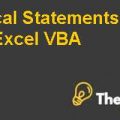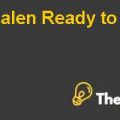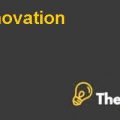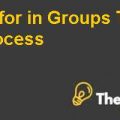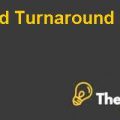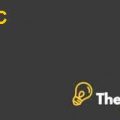Rosario Acero S.A Case Study Solution
In addition to this, the weighted average cost of capital is calculated for the company under each scenario. The weighted average cost of capital under warrant alternative is calculated to be 38 percent while the weighted average cost of capital under equity alternative is calculated to be 18 percent. Hence, the higher weighted average cost of capital is not good because the higher WACC denotes substantial increase in risk and decrease in valuation. The high WACC with debt financing implies that the project would most likely has riskier cash inflows over the period of time which would needed to compensated by high return per unit of capital employed. The WACC is used to discount the free cash flows, hence resulted in $6986624.7 terminal value under debt financing whereas the terminal value under equity financing is $64225172.4. The Enterprise value under debt and equity financing is $1395750 and $27650576 respectively.
Theoretical Share Price
As the clear information has not been provided in the case, some assumptions are used to compute the fair value of the stock of company. The growth rate is assumed to be 6 percentand the stock marker reflects the economy but the impact of inflation is included in computation. So, the fair price of stock is 5.11 if firm uses debt with warrant financing whereas the fair price of stock is 118.67 if the firm uses equity financing. It is quite higher as compared to the offered value of stock.
There are many potential risk which re associated with the debt financing such as there is a possibility that the warrants attached to the debt would cost extra money for the company this could be offset by the company through inflation effects but the income of the company would be greatly affected by the loan in the forthcoming years due to the large amount of payments.
In addition to this, the debt issuance to the private bondholders would most likely reduces the financial flexibility of the company. New investment or ventures is not easy to finance because of the fact that lending firms recognizes a substantial long term debt amount on the company’s financial statement (balance sheet), hence becomes reluctant to extend the credit. This in turn would limit the freedom Rosario would have to expand through making capital investment or acquisition in the future ahead.
Also, the company would only need to pay common stock dividends when the additional corporate funds are available while the interest on debt must be paid each month. As per the case, the country’s economy has been gaining better heights and the stock market is rebounded from Tequila effect of Peso cash and the Merval index also increased over the period of three years, suggesting a rising optimism among equity investors, hence the thriving economy would greatly supports the equity financing option because the company would receive more than asking price of share as the stock price would be increasing. The market of initial public offering (IPO) seems to be improving due to which IPO would have better trade off as compared to warrants.
Moreover, it can be seen that those companies which has been issuing debt in South America have been rated below to the investment grades. So, the wise decision is to go with equity financing rather ta debt financing. Lastly, Este himself has been concerned about the liquidity of his investment in the company. Under this circumstances, the wise decision is to go for IPO.
Although, the risk is also associated with equity financing which is that there is no guarantee that the company would trade its stock at an acceptable level. A company’s managers had bought stock at $9 per share but Pablo was deciding to offer share in the market at higher price. If the price of stock would determine to be lower as compared to $9 /share, the company’s managers would most likely view that the share are less vulnerable. Furthermore, the amount should be greater in size for the purpose of raising the desired amount. This in turn would lead to higher cost of control because of the dilution. This risk can be pass to underwriter for 8 percent fee, also this cost can be decrease to 2 percent via best efforts placement, and the underwriting option could be considered by company to hedge the risk of issuing IPO.
Additionally, the IPO would give fast access to the company to public capital. Secondly, the warrants have relatively high risk for the business and does not have potential for huge opportunities and gains as compared to IPOs. If the company plan to exercise warrants it must be done before the date of expiration. The more time consuming until date of expiration, the more time for security to appreciate which in turn would increasing the warrant price unless it depreciates.
Section 04: Recommendation & Justification
In consideration of the quantitative analysis, it is to recommend that the company should go for initial public offerings (IPOs) rather than short notes with warrants, it is due to the reasons that when warrant is used it might use the debt capacity of the company, hence precluding the debt financing option to meet the anticipated financial requirements in future. There is a likelihood that the company would need additional capital for many reason such as financial crises due to economic downturn or sudden investment opportunity, so issuing warrants would not provide company enough flexibility. The calculated earing per share is anticipated to be higher so that the company would maintain most of its flexibility due to it. Becoming a publicly traded company, the business would be able to take advantage of the larger and new market opportunities and could exploit the expansion opportunities in future.
Since, the investors find IPO attractive because of the reason that the IPO might be undervalued initially. So, to make IPOs more attractive the company could offer them at lower rate top investors. This in turn helps company in encouraging investors and they could buy them thanking that the financial performance of the company would be strong. Equity would serve to increase the borrowing power of company and would provide more flexibility in near future. Also, the debt financing consist 8 year senior notes with warrants and 13% interest rate is equivalent to 980000 dollar per year which is considered additional expenses. The intrinsic debt risk is default which would put the company into bankruptcy. Also, the external forces could also adversely affect the burden of debt in future such as rate of interest and fluctuation in inflation would incur more impediment on the company depending upon the situation. A reduction in the interest rate would not be favorable for the company because of the reason that it would lock in to the 13 percent fixed rate. So, Este is advised to go for IPO to finance the business operations………….
This is just a sample partical work. Please place the order on the website to get your own originally done case solution.
How We Work?
Just email us your case materials and instructions to order@thecasesolutions.com and confirm your order by making the payment here

